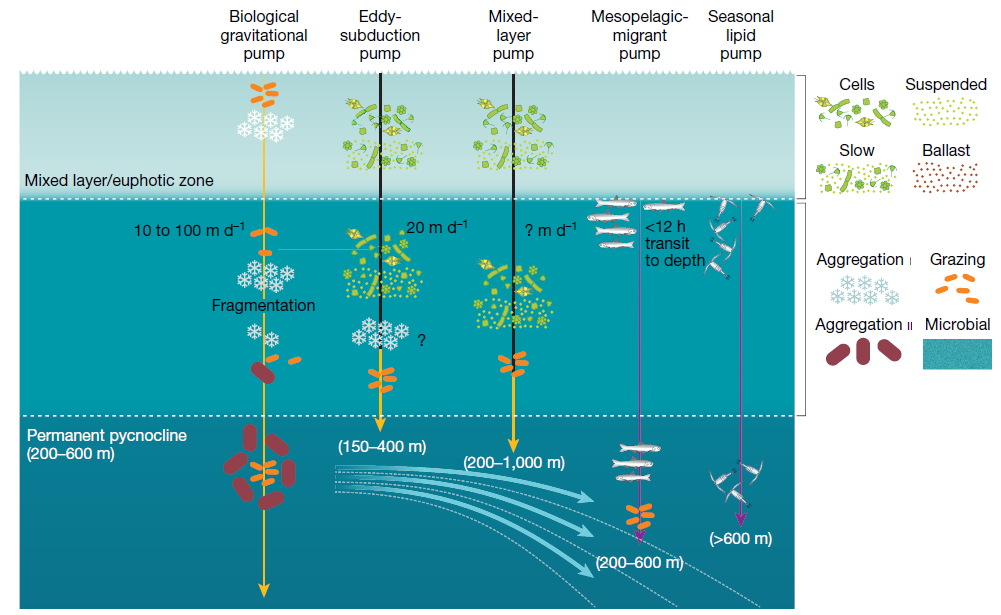The oceans are teaming with particles operationally defined as the size fraction > 0.2μm but excluding swimming organisms. These include bacteria and plankton as well as non-living inorganic materials such as atmospherically deposited dust and sediments as well as organic particles. Some biogenic particles form carbonate shells and are thus affecting and being affected by ocean acidification. Besides composition, the size of a particle is a critical parameter as both surface area related processes (e.g. dissolution, adsorption) as well as settling depend on the square of the particle size. Particles play a key role in transport of nutrients and pollutants from land to ocean as well as transporting organic materials produced near the ocean’s surface to depth. The latter is controlled by biological processes such as particle aggregation and settling, zooplankton vertical migration, as well as mediated by physical processes such as subduction and mixed-layer dynamics. This transfer of food as well as atmospheric CO2 to the deep ocean is critical for life at the unlit parts of the oceans and to the sequestration of atmospheric carbon and hence directly relevant to climate change.
Rationale for IOCCP to be concerned with Particulate Matter
Particulate matter (PM) is a highly reactive pool of carbon and hence of interest to the IOCCP. Commercial technologies/methodologies for the measurements and characterization of PM have been continuously improving since the 70s (including with Space-based assets) and there is a need to update and cross-compare them on a regular basis as well as to train new scientists and produce best practice protocols. In addition, relevant data repositories need to be known and be interoperable to maximize the use of the data. The IOCCP would like to take a leadership role in these activities in coordination with other relevant parties (e.g. IOCCG, US OCB).
Interplay between particle characteristics, mode of export, delivery path and ocean-circulation

